The Scientists behind the Cloud Mystery
Below are the scientists interviewed for the cloud mystery program.
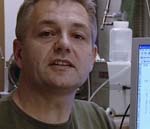 Dr. Henrik Svensmark is the head of the Centre for Sun-Climate Research, at DTU Space, Technical University of Denmark. Since 1997, Svensmark spearheaded the idea that solar activity variations affect climate on Earth, through solar activity modulation of the cosmic rays reaching the Earth and the effect that these particles have on cloud cover. This idea received a significant boost with the SKY experiment that he headed, which showed under laboratory conditions how the ionization caused by cosmic rays gives rise to the formation of condensation nuclei, a necessary step in the formation of clouds.
Dr. Henrik Svensmark is the head of the Centre for Sun-Climate Research, at DTU Space, Technical University of Denmark. Since 1997, Svensmark spearheaded the idea that solar activity variations affect climate on Earth, through solar activity modulation of the cosmic rays reaching the Earth and the effect that these particles have on cloud cover. This idea received a significant boost with the SKY experiment that he headed, which showed under laboratory conditions how the ionization caused by cosmic rays gives rise to the formation of condensation nuclei, a necessary step in the formation of clouds.
This idea is the main theme covered in the documentary.
Home page: At DTU Space.
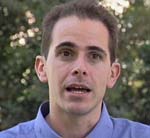 Prof. Nir Shaviv is a member of the Racah Insitute of Physics at the Hebrew University of Jerusalem. His research interests cover a wide range of topics in astrophysics, most are related to the application of fluid dynamics, radiation transfer or high energy physics to a wide range of objects - from stars and compact objects to galaxies and the early universe. His studies on the possible relationships between cosmic rays intensity and the Earth's climate, and the Milky Way's Spiral Arms and Ice Age Epochs on Earth were widely echoed in the scientific literature. They are also described at length in the documentary.
Prof. Nir Shaviv is a member of the Racah Insitute of Physics at the Hebrew University of Jerusalem. His research interests cover a wide range of topics in astrophysics, most are related to the application of fluid dynamics, radiation transfer or high energy physics to a wide range of objects - from stars and compact objects to galaxies and the early universe. His studies on the possible relationships between cosmic rays intensity and the Earth's climate, and the Milky Way's Spiral Arms and Ice Age Epochs on Earth were widely echoed in the scientific literature. They are also described at length in the documentary.
Home page: At the Hebrew University
Personal blog: ScienceBits.com
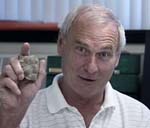 Prof. Ján Veizer, born in Czechoslovakia, left his home country in 1968 and, after scientific stations in Australia, the US and the Federal Republic of Germany, was, in 1979, named Full Professor at the University of Ottawa, Canada. In 1988 he accepted an invitation to the Chair of Sedimentary Geology at the Ruhr-University in Bochum, but still retains his association with the University of Ottawa. Ján Veizer, considered one of the most creative, idea-rich and productive geoscientists of our times, has in his research in front of his eyes the overall picture of the Earth during its entire 4.5 billion years of evolution. He proposes, that our planet – in analogy to living systems – is involved in “birth-death cycles” that apply also to geological bodies. In his view, rocks, mineral deposits and tectonic units, such as mountain ranges and oceans, follow the rules of population dynamics. Jan Veizer is also the recipient of numerous prestigious fellowships and awards.
Prof. Ján Veizer, born in Czechoslovakia, left his home country in 1968 and, after scientific stations in Australia, the US and the Federal Republic of Germany, was, in 1979, named Full Professor at the University of Ottawa, Canada. In 1988 he accepted an invitation to the Chair of Sedimentary Geology at the Ruhr-University in Bochum, but still retains his association with the University of Ottawa. Ján Veizer, considered one of the most creative, idea-rich and productive geoscientists of our times, has in his research in front of his eyes the overall picture of the Earth during its entire 4.5 billion years of evolution. He proposes, that our planet – in analogy to living systems – is involved in “birth-death cycles” that apply also to geological bodies. In his view, rocks, mineral deposits and tectonic units, such as mountain ranges and oceans, follow the rules of population dynamics. Jan Veizer is also the recipient of numerous prestigious fellowships and awards.
Home page: At the University of Ottawa
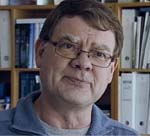 Prof. Eigil Friis-Christensen is a space physicist and director of DTU Space. His scientific career includes many aspects of the solar wind-magnetosphere coupling processes and their ionospheric "footprints". Already early in life EigilFriis-Christensen was fascinated by the interdisciplinary aspects of solar-terrestrialrelationships, and in particular the possible effects in the lower atmosphere (weather andclimate) of solar activity variations. In 1991, Friis-Christensen and Lassen discovered that the solar cycle length correlates with the global temperature variations.
Prof. Eigil Friis-Christensen is a space physicist and director of DTU Space. His scientific career includes many aspects of the solar wind-magnetosphere coupling processes and their ionospheric "footprints". Already early in life EigilFriis-Christensen was fascinated by the interdisciplinary aspects of solar-terrestrialrelationships, and in particular the possible effects in the lower atmosphere (weather andclimate) of solar activity variations. In 1991, Friis-Christensen and Lassen discovered that the solar cycle length correlates with the global temperature variations.
Wikipedia entry
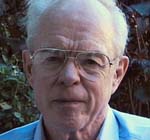 Prof. Eugene Parker is Distinguished Service Professor Emeritus in Physics, Astronomy and Astrophysics at the University of Chicago, and the world's top expert on the solar wind, which fights the incoming cosmic rays. He published the first full theory of the solar wind in 1958, predicting among other features the curved magnetic fields that are now called Parker spirals. Spacecraft travelling into the Solar System confirmed his predictions magnificently, but before then fellow experts had greeted his ideas with total scepticism, and even tried to prevent their publication. That experience left Prof. Parker sympathetic to other pioneering scientists (like Henrik Svensmark) given a hard time by their colleagues.
Prof. Eugene Parker is Distinguished Service Professor Emeritus in Physics, Astronomy and Astrophysics at the University of Chicago, and the world's top expert on the solar wind, which fights the incoming cosmic rays. He published the first full theory of the solar wind in 1958, predicting among other features the curved magnetic fields that are now called Parker spirals. Spacecraft travelling into the Solar System confirmed his predictions magnificently, but before then fellow experts had greeted his ideas with total scepticism, and even tried to prevent their publication. That experience left Prof. Parker sympathetic to other pioneering scientists (like Henrik Svensmark) given a hard time by their colleagues.
Wikipedia entry.
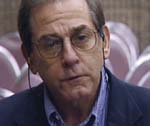 Prof. Richard Turco is the founding Director of the Institute of the Environment at the University of California Los Angeles (UCLA) and Professor of Atmospheric Sciences. Earlier in his career he was well known for pioneering work on the the climatic effect of nuclear war ('nuclear winter') and on the effect of manmade chemicals on high-altitude ozone over Antarctica ('the ozone hole'). Recent research ranges from the condensation trails of aircraft to global models of air pollution. Prof. Turco's theoretical work in association with Fangqun Yu on the chemistry of aerosols and cloud formation ('ion mediated nucleation') is highly relevant to the question of how cosmic rays can influence the Earth's cloudiness, as investigated experimentally by the Svensmark team.
Prof. Richard Turco is the founding Director of the Institute of the Environment at the University of California Los Angeles (UCLA) and Professor of Atmospheric Sciences. Earlier in his career he was well known for pioneering work on the the climatic effect of nuclear war ('nuclear winter') and on the effect of manmade chemicals on high-altitude ozone over Antarctica ('the ozone hole'). Recent research ranges from the condensation trails of aircraft to global models of air pollution. Prof. Turco's theoretical work in association with Fangqun Yu on the chemistry of aerosols and cloud formation ('ion mediated nucleation') is highly relevant to the question of how cosmic rays can influence the Earth's cloudiness, as investigated experimentally by the Svensmark team.
Home page: At UCLA